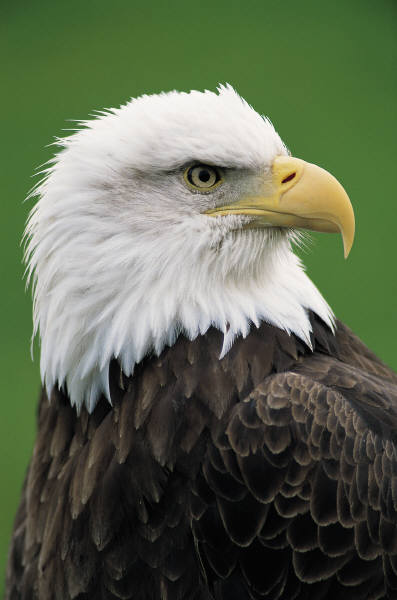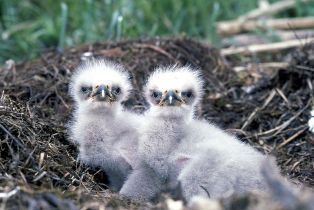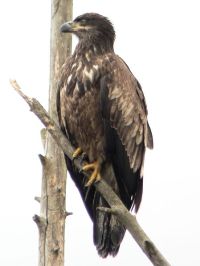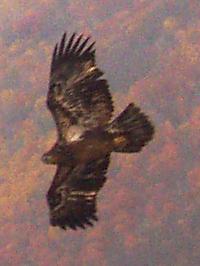
Eagle Development:
As I stated in the reproduction page of my website, bald eagles hatch after a thirty-five day incubation period. The hatching process begins when the small eaglet pokes through the egg with a special tooth, designed to chisel at the shell, called an "egg tooth." The "tooth's" (which really is not an actual tooth) only purpose is to break through the shell, in a process called "pipping." The eagle breaks out of the shell with little or no help from the parents.
An image of the egg tooth can be found here thanks to edventures.com.
During the first several days, it spends most of its time in the nest sleeping. The newly hatched eaglet lacks true feathers and is very weak, depending completely on the parents for food. As they grow and mature competition amount nest mates can become fierce. Observations have shown that the mortality rate of second hatched offspring is much higher than in first hatched. The reasoning for this is that the first hatched eaglet is larger and dominates the food supply, sometimes even using the strong pipping muscles, that were originally designed to break out of the shell, to peck at the younger sibling. The second hatched eaglet gets to a point where it refuses to eat, and eventually dies of starvation. Surprisingly, the eagle parents do little to prevent this conflict.
The growth of a bald eagle can only be described as extraordinary, in fact, it is the fastest growing bird of North America. In the first three months after hatching, Bald Eagles can from from 100g to about 4,000g or 5,000g (depending on the sex). Females generally outweigh the male counterparts in these early stages of development.
A major stage in any Bald Eagle's life is fledging, the term used when eagles learn to fly. This occurs on average 8-14 weeks after hatching, but can depend on outside disturbances including human or other predatory contact. It also appears to be the case that males fledge earlier than females, and an eagle that is in the nest alone will also fledge sooner than an eagle that shares a nest, probably because they have received more attention from the parents.
The first flight is a very awkward one, and the clumsy eagles often crash land into trees or the ground do to their trouble controlling flight speed. Landing on the ground is particularly troublesome because thick vegetation could impair further attempts at flight, and an increased risk of predation from ground-bound animals.


